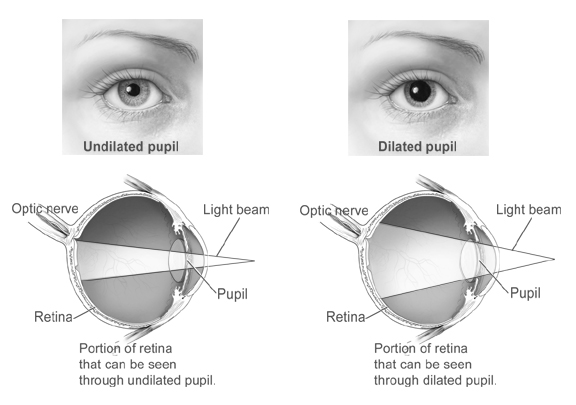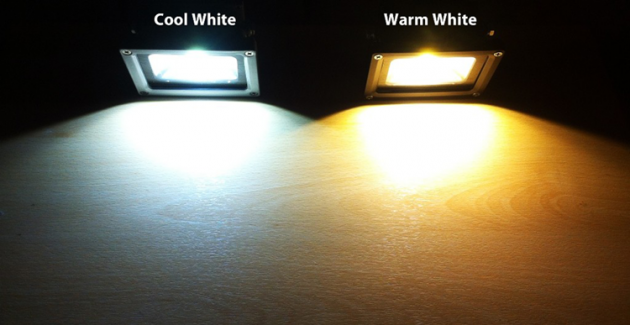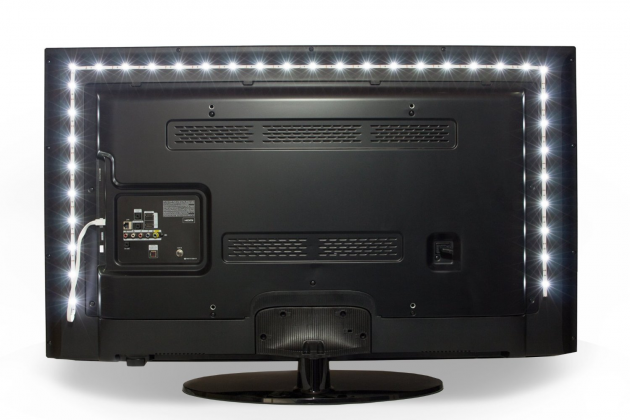How To Reduce Computer Screen Eyestrain On Dark Environments with Bias Lighting
Those of us who tend to work in front of the computer screen until late at night, or watch series and movies at night time hours, chances are that we face symptoms such as dry eyes, eye fatigue and even headaches. In previous articles, we referred to various methods that would help to reduce eyestrain, as well as how to change the background color of any web page to reduce eyestrain. In this article we will see how you can avoid eye-related problems caused by computer screens at night with proper lighting.
- Why screens are not good for your eyes
- Dark visual field
- Lighting in front of screen
- What is bias lighting
- Relaxing screen
- Better viewing experience
- From theory to practice
- How to pick the correct light source
- Temperature
- Brightness
- Color rendering index
- How to add bias lighting to any screen
Why screens are not good for your eyes
In order to understand the reason why our eyes become tired while looking at a screen, we need to understand how our vision works.
Dark visual field
When we view something in our environment, be it a landscape, or a small object, the eye pupils dilate and contract in order to regulate the amount of light received by the eye.
This dilation does not depend on the brightness of the object on which we focus, but the entire scene.
When you are watching TV or sitting at the computer, and the environment around you is dark, this creates very poor viewing conditions for your eyes. It's like looking persistently for hours a very small spot with bright light, while there is darkness everywhere else.
The eyes however, can tell the difference between the screen’s brightness and the surrounding environment. But the pupil controls the dilation/contraction based on the average brightness of the entire visual field.
In other words, although there is too much light in front of us, our eyes do not contract as much as they should, because they include the darkness in the whole place as well, when making computations.
As a result, the eyes become tired after a certain time period. Gradually, symptoms such as fatigue, dry eyes or tears appear, as well as overall difficulty in viewing. Furthermore, migraines or strong headaches might appear too due to these conditions.
The good news in this situation is that all these symptoms are temporary. Within 24 hours at most, these symptoms usually subside if the eyes get some rest. However, this does not mean that this kind of strain cannot produce more permanent effects if this you keep on working like that for long.
Lighting in front of screen
The key is to increase the brightness in the room, without having to turn on all the lights around you. While this would solve the issue of a dark environment, it would create additional problems.
For example, the lights located on the ceiling shed light on the display, and as a result, the perceived contrast is decreased, and reflections are created. On the other hand, when the light source is not behind you but in front of you, it falls directly on your eyes.
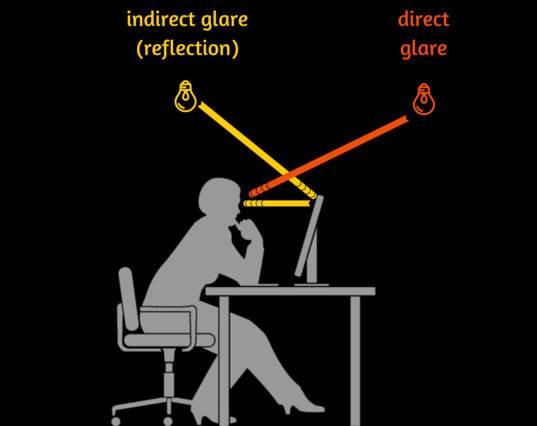
Of course this kind of eye strain might not be as significant as in the case of the dark room, but it still tires the eyes.
So how can all this be avoided? The answer lies in bias lighting, which is a trick for a more relaxing screen.
What is bias lighting
The term bias lighting is used to describe a light source mounted behind a screen.
Relaxing screen
When you place a light source behind the screen, you primarily achieve two things.
First, you increase the overall brightness of your visual field. Secondly, there is a light source that falls directly on the screen, so you can observe immediately that the problems described above disappear.
At the same time, your eyes do not have direct contact with the source of light, since it is located behind the screen.
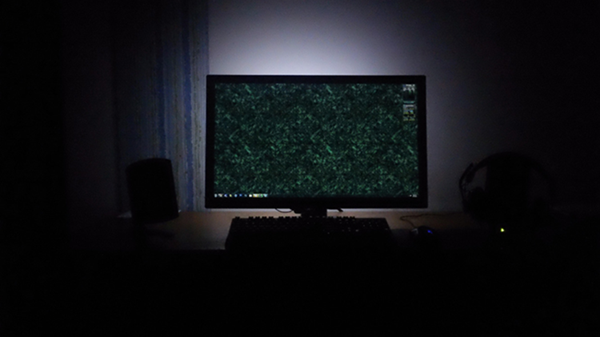
Practically, this means that you benefit from the increased brightness in your field of vision, without harming your eyesight.
Better viewing experience
The truth is that, apart from a more relaxed viewing and less eyestrain, this solution provides various other advantages as well.
Surely, you must have seen from time to time various images on the internet with optical illusions, such as the one below:
Which box do you think has a darker color, box 1 or box 2?
Clearly, you know that it is a trap question, and deep down you know that if you trust your eyes you would answer wrong. The correct answer, therefore, is that both boxes have exactly the same color.
The background’s colors is what makes us believe that box 1 is darker. This is due to the brain’s functionality, which takes into account the brightness of the environment, in order to approximate the true color of an object.
Therefore, when the environment is dark, the brain assumes that the objects we see are brighter, and vice-versa.
When you watch something on TV or on the computer screen, you want to create the conditions of box 1, thus you increase the perceived depth of black color, making colors look more vivid.
Of course, a similar result is achieved if you adjusted the contrast and brightness settings of the monitor. But this way you strain your eyes, plus the monitor’s life period is reduced.
From theory to practice
So far we have seen why bias lighting is useful for a more relaxing screen, so let’s get into more practical details. How much will this cost? Are there ready-made solutions or will you have to build something manually?
The truth is that there are many ways to achieve a decent bias lighting. You can either create your own light with affordable materials, or buy a ready-made solution.
If cost is not an issue, you can also choose a TV with bias lighting integrated in it.
The Ambilight TVs by Philips not only include bias lighting, but it automatically adapts to the screen’s content.
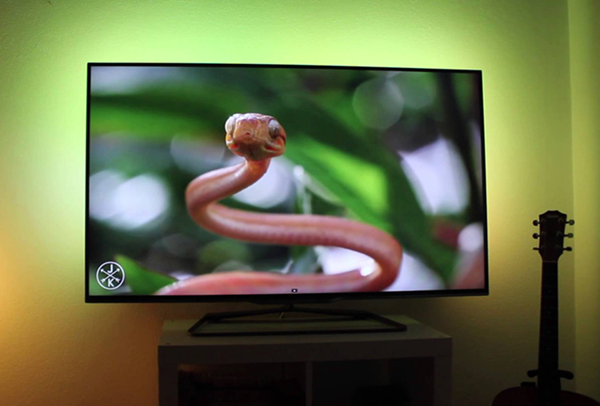
But because not everyone has the opportunity to buy such a TV, let’s see various affordable ways for having a relaxing screen using bias lighting.
How to pick the correct light source
It is preferable to use any kind of lighting behind the screen, than having no lighting at all.
However, if you are interested in having the best viewing experience possible, you should be careful when choosing a light source.
Whether you choose to build something yourself, or buy a ready-made solution, you need to know what kind of features the light source you pick should have.
The most important features are brightness, color temperature, and color rendering index.
Temperature
The color temperature is measured in the Kelvin temperature scale. The lower the temperature, the hotter and redder the light emitted is, whereas when the temperature is higher, the light is cooler and bluer.
Most light sources usually start from 2500K (warm), and reach up to 6500K (cool).
Usually, warm bulbs used in homes, since the light emitted is reminiscent of sunlight, so it looks more natural.
TVs and monitors on the other hand, are calibrated to 6500K. Movies and digital content generally has 6500K as a reference point for the white color. This means that to create the ideal bias lighting, you have to choose light sources with a temperature close to 6500K, i.e. cool lighting.
Brightness
The brightness of a light source is measured in Lumens. More Lumens means brighter lighting. Usually, the bulbs used in homes have a brightness ranging from 400 to 1200 Lumens.
However, there are bulbs with higher values, reaching up to 15.000 Lumens, but the purpose in this case is not to light up the entire neighborhood.
But of course, you do not want a light source which will barely light up anything behind the screen, therefore it’s better to get a quite bright one. Ideally, you would need a light source with over 1500 Lumens.
Color rendering index
Color Rendering Index (CRI) of a light source measures its ability to highlight the correct colors of objects, compared with a natural light source. The CRI values ​​range from 0 to 100, and the higher, the more correctly the colors around it appear.
Although it is not a very important property when choosing a light source for bias lighting, the ideal values ​​for this purpose are from above 90.
These values ​​are proposed mainly for those who use video and image editing software on a professional level, because with this type of light they can have optimal color rendering on the screen.
You, average user, on the other hand, don’t have to be very selective in this case- you might not even pay attention to the CRI at all.
How to add bias lighting to any screen
If you like DIY work, then with just a bit of imagination you can make the ideal bias lighting easily.
A very good idea used by many, is LED strip lights. Actually, USB-powered LED strips can be connected directly to the computer or TV via USB, so there is no need for an extra power outlet.
After buying a LED strip, you can stick it to the back of the monitor or on the wall.
Another solution is to place some kind of light bulb on the back of the screen.
In essence, it’s up to the user and his imagination to build a bias lighting solution. This will not only help reduce eyestrain and headaches, but will also provide a more pleasurable viewing experience as well.
Let us know your thoughts and suggestions in the comments section below!

